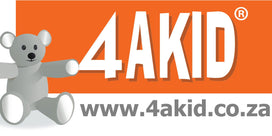Biting happens when it happens, and no matter what else is going on, child care programs make an extra effort and work hard to restore order and take care of all the children. The following is solid and timeless advice on adolescent biting, adapted from Prime Times: A Handbook for Excellence in Infant and Toddler Care by Jim Greenman and Anne Stonehouse.
In all biting situations, regardless of the likely cause, it is important that adults show strong disapproval through words and manner. Sometimes biting escalates beyond an occasional occurrence where parents and center staff must work together to address the behavior.
Responding to a Biting Crisis
When biting changes from a relatively unusual occurrence of once or twice a week to a frequent and expected occurrence, staff at Bright Horizons child care centers apply extraordinary resources to the situation, including the use of some or all of the following strategies:
1. Meet on a daily basis. The staff in the room meet with the director or other supervisor or support staff on a daily basis throughout the crisis for advice and support, and maintain a perspective devoid of blame directed toward children, parents, or staff.
2. Document every bite and attempted bite. Chart every occurrence, including attempted bites, and indicate location, time, participants, staff present, and circumstances.
3. Evaluate staff response. Evaluate the immediate staff response to each biting situation for appropriate intervention that ensures:
- comforting the injured child and treating the injury
- cool, firm, disapproving response to the biter that does not inadvertently provide reinforcement to the biter
-
Look for biting patterns. Analyze the chart and profile the behavior patterns and the environmental context of frequent biters and frequent victims.
5. Change the room environment. Make use of all spaces in the center such as the playground and walkways, and spread out activities to avoid congestion, crowding, competition and child boredom.
6. Work with the children in small groups. Avoid large group activities and routines and break into smaller groups.
7. Have one teacher "shadow" the biter. The teacher tries to:
- Anticipate biting situations.
- Teach non-biting responses to situations and reinforce appropriate behavior in potential biting situations.
- Adapt the program to better fit the individual child’s needs.
-
Watch over a child who is likely to be bitten. Anticipate the biting situations and teach responses that minimize the chance of becoming a victim.
9. Help make the children feel secure. Look for ways to promote the children’s sense of security and stability:
- No surprises: maintain a predictable schedule and ensure that children understand and anticipate the progression of the day.
- Ensure plenty of one-on-one interactions with each child’s primary caregiver
- Ensure warm, cozy, semi-secluded "places to be.
- Avoid staffing changes.
- Develop and maintain individual and group rituals.
10. If appropriate, transition the child to another room. Consider early transition of children stuck in a biting behavior pattern to a changed environment if developmentally appropriate and allowed by licensing.
11. Help all children get more involved in the program. Look for ways to engage children more effectively in the environment by looking at the choices available and the number of toys and materials.
12. Balance active times with quiet times. Look for ways to calm children after periods of excitement with: relaxed transitions, calming music, and calming physical contact with caregivers.
13. Group children to avoid biting. Analyze grouping children to avoid combinations that may lead to conflict or biting.
14. Have others observe the biting epidemic. If necessary, bring in outside observers to help you analyze the entire situation, not just the biters.
Hanging on During a Biting Crisis
Magic feathers helped Dumbo fly, but there are no magic feathers to solve a biting crisis. Sometimes nothing works, and children grow out of it or leave the program. Doing all of the above should help alleviate or shorten the crisis. Maintaining good relationships with parents during a biting epidemic requires all the trust and goodwill built up by good program practice before biting ever occurs.
source: https://www.brighthorizons.com/










